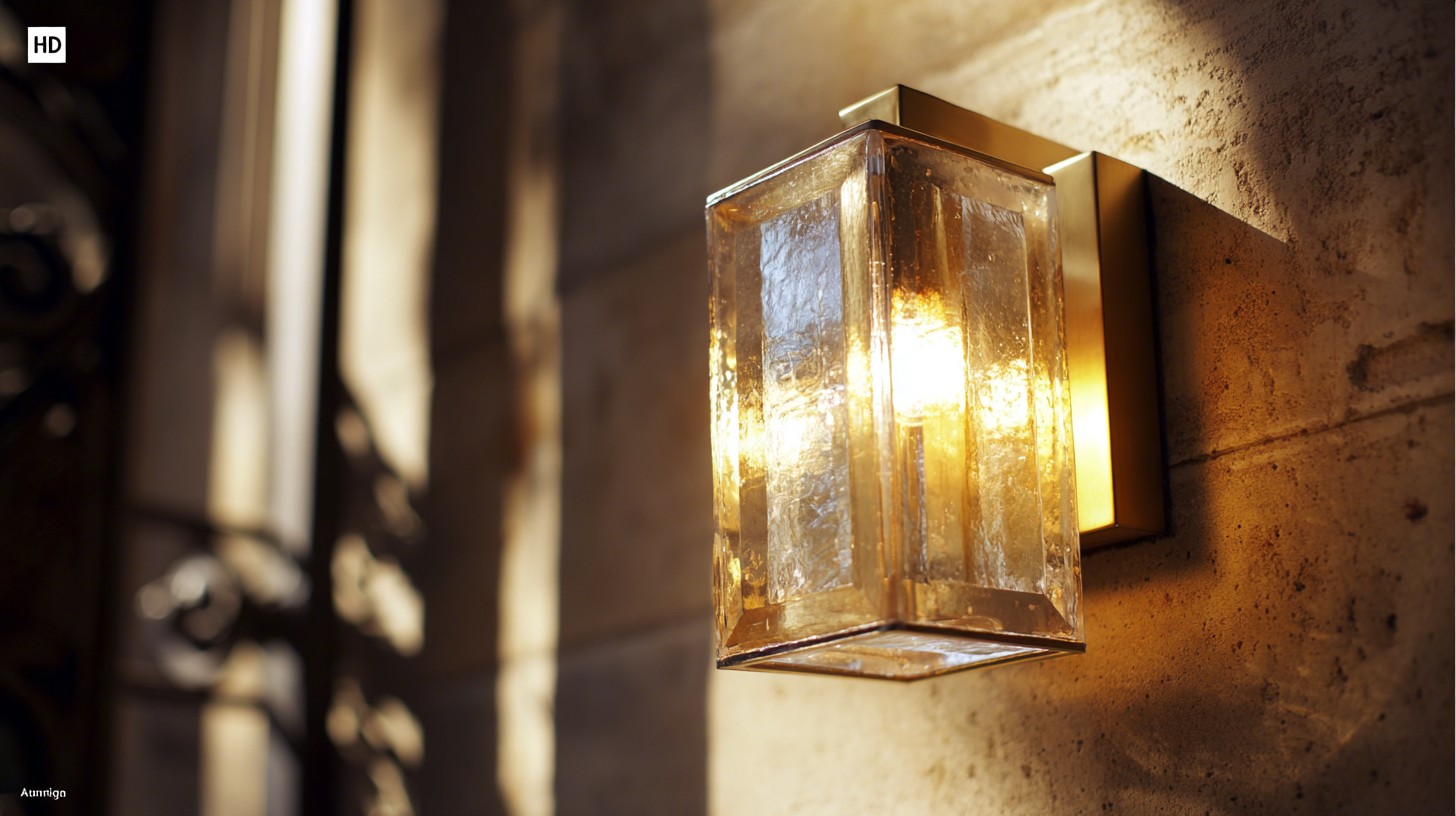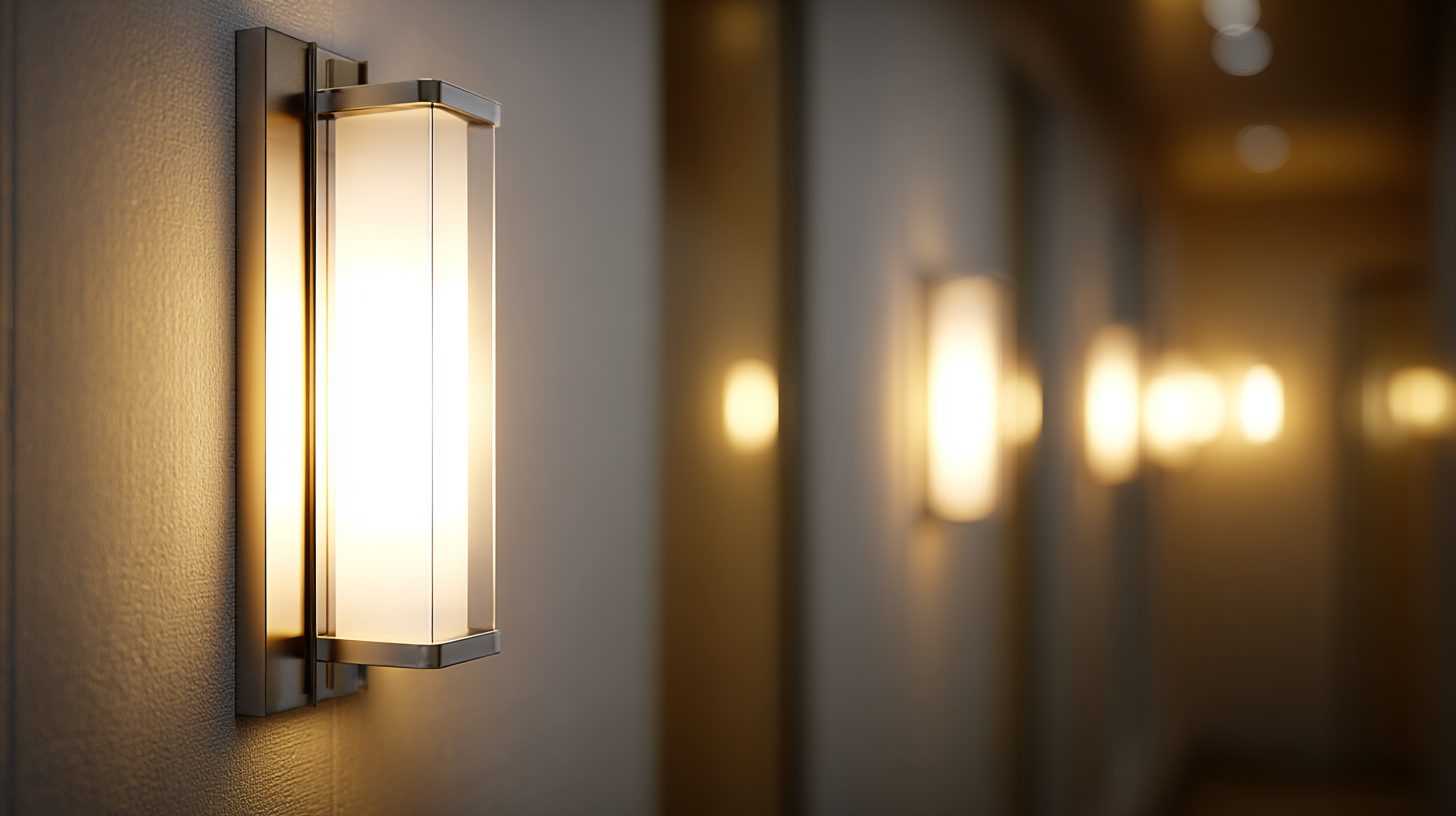
As we move towards a more sustainable future, the lighting industry is experiencing significant transformations, particularly in the realm of decorative fixtures like Wall Light Glass. According to a recent market analysis report, the global energy-efficient lighting market is projected to reach $140 billion by 2025, with demand driven by evolving consumer preferences for both style and sustainability. Wall Light Glass not only enhances the aesthetic appeal of residential and commercial spaces but also contributes to energy efficiency by utilizing advanced technologies such as LED illumination. This convergence of design and functionality presents an exciting opportunity for consumers to invest in products that align with their energy conservation goals while adding a touch of elegance to their environments. As we explore how to choose the best Wall Light Glass, it is crucial to consider both its energy performance and its ability to complement various design styles.

When selecting wall light glass, one crucial aspect to consider is energy efficiency ratings. Energy-efficient lighting not only reduces electricity bills but also minimizes environmental impact. According to the U.S. Department of Energy, energy-efficient lighting options, such as LED wall lights, use at least 75% less energy than traditional incandescent bulbs, offering significant savings over time. This makes understanding the energy efficiency ratings essential for making informed choices about wall light fixtures.

To evaluate the energy efficiency of wall light glass, look for labels that indicate their Energy Star certification or the lumen-per-watt ratio. Lighting products with Energy Star ratings meet strict energy efficiency guidelines set by the Environmental Protection Agency. Reports show that homes using Energy Star certified lighting can save an average of $100 per year on energy costs. Additionally, considering the lumens produced relative to the watts consumed provides insight into how effectively the light will illuminate a space while conserving energy. This focus on efficiency not only supports sustainability but can also complement various styles and aesthetics in home decor.
When selecting glass types for wall lights, understanding the energy efficiency of various materials is crucial. According to a report by the U.S. Department of Energy, glass can significantly influence a fixture's ability to transmit light. Clear glass, for instance, allows maximum light diffusion, making it a popular choice for spaces that require bright illumination. In contrast, frosted glass diffuses light more softly, which can create a cozy ambiance while reducing glare. Utilizing high-transmission glass can improve overall energy efficiency, enabling you to enjoy bright lighting without an excessive energy bill.
Moreover, tempered glass is not only stylish but also enhances safety and durability. A study from the International Energy Agency highlights that using durable materials, such as tempered glass, can extend the lifespan of lighting fixtures by up to 30%, thereby reducing waste and the need for replacement. Additionally, options like recycled glass are becoming increasingly popular, as they contribute to sustainability efforts and lower energy costs throughout the product lifecycle. With such diverse options available, choosing the right glass type for your wall lights can seamlessly blend style and energy efficiency in your home.
When designing a space, the aesthetic of your wall lights can significantly influence the overall ambiance and style of the room. Choosing wall lights that align with your design vision is essential. For a modern look, consider sleek, minimalist designs that use geometric shapes and clean lines. These fixtures not only enhance the contemporary feel but also provide an unobtrusive lighting solution that complements your decor without overwhelming it.
Alternatively, if you're aiming for a more rustic or vintage vibe, opt for wall lights made from materials like wrought iron or aged brass. Fixtures that feature intricate detailing or an antique finish can add character and warmth to your space. Incorporating such elements can create a cozy atmosphere while still ensuring adequate illumination. Remember to consider the scale and proportion of the fixtures in relation to your walls; oversized lights can serve as dramatic focal points, while smaller ones offer subtle accents that enhance your design theme.
| Dimensional Category | Material Type | Energy Efficiency Rating | Style Aesthetic | Average Lifespan (Years) |
|---|---|---|---|---|
| Small | Glass | A+ | Modern | 10 |
| Medium | Frosted Glass | A | Contemporary | 8 |
| Large | Clear Glass | B | Rustic | 12 |
| Small | Colored Glass | A++ | Art Deco | 11 |
| Medium | Textured Glass | A | Industrial | 9 |
When it comes to installing and positioning wall lights, achieving a balance between energy efficiency and style is paramount. According to industry reports, energy-efficient lighting solutions, such as LED fixtures, can reduce energy consumption by up to 75% compared to traditional incandescent bulbs. When selecting wall lights, consider options that offer dimming features or programmable settings, allowing you to adjust the light based on the time of day and the activity at hand. This flexibility not only enhances the ambiance of a room but also contributes to significant energy savings over time.
Positioning your wall lights effectively is crucial for maximizing their impact. For example, when installing lights above mirrors in bathrooms, experts suggest placing them approximately 36 to 40 inches above the counter for optimal illumination. Similarly, in bedrooms, bedside wall lights should be positioned 48 to 54 inches from the floor to ensure they provide adequate light for reading without casting harsh shadows. Implementing these practical tips not only enhances functionality but also enhances the overall aesthetic of your spaces, making your home both stylish and energy-efficient.

Maintaining your glass wall lights is essential for preserving both their aesthetic appeal and energy efficiency. Regular cleaning is the first step; dust and grime can accumulate over time, blocking light and reducing the effectiveness of the bulbs. Use a soft, lint-free cloth with a mild glass cleaner to gently wipe down the fixtures. Ensure the bulbs are accessible before cleaning, as some light fixtures may have complex designs that accumulate dirt in hard-to-reach areas.
In addition to cleaning, it’s important to regularly check the fittings and connections for any signs of wear or damage. Loose fixtures can lead to inefficiencies, diminishing the light output and increasing energy consumption. If you notice flickering or dimming lights, it may indicate a need to replace the bulbs or a problem with the electrical connections. Investing in high-quality, energy-efficient LED bulbs can also enhance the longevity and efficiency of your glass wall lights, ensuring they remain both stylish and cost-effective over time.